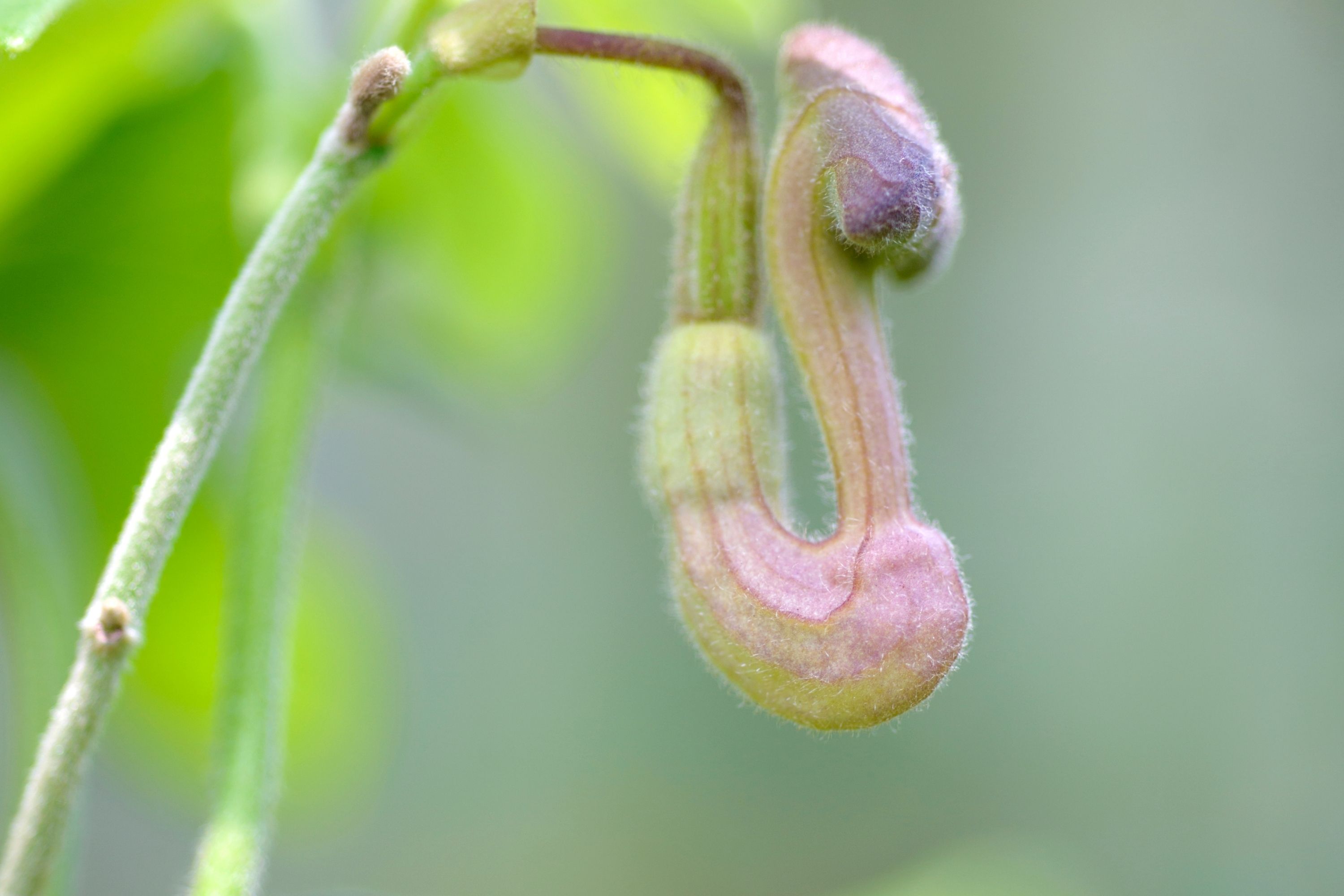Aristolochia macrophylla
(Aristolochia macrophylla)

Description
This vine is a flowering plant that can grow up to 30 feet (9 m) at a relatively fast rate. In the early stages of its development, the vines of Aristolochia macrophylla are very stiff and rigid, but as the plant develops, the vines become much more flexible and stable. This is because the plant is composed of sclerenchymatous cortical tissue, which has an outer cylinder, or layer, as well as an inner cylinder. Years of research showed that it is the outer sclerenchymatous cylinder that gives the stems of this plant its mechanical stability. This species flowers between the months of June and August in the U.S. with its seeds ripening in September and October. The large heart-shaped leaves can range between 6� inches (5�30 cm). These dark green leaves can overlap and cover an arbor or trellis. Plants can also be used to provide extensive covers for pillars, sun porches, fences, walls as well as other things. The reason why Aristolochia macrophylla is often referred to as Dutchman�s pipe is because of the inches (5 cm) yellowish-green flowers they produce. Each flower also sprouts from the calyx mouth to further produce 3 brownish-purple lobes. It is this complex of the flowers and lobes that gives the species a close resemblance to Dutch smoking pipes. The flowers may be hidden by the thick vegetation of the pipevine. The flowers start to open up in May and June in the U.S. and the fragrant flowers attract small flies and gnats. Once an insect has arrived to the flower, the insect is trapped inside a tube, which forces the insect to carry out pollination. Once pollination has been completed and time has passed since pollination, a fruit resembling a cucumber, between 6�0 cm in height, and 3 cm in diameter is produced. The fruit then ripens, usually around September in the U.S., turns brown and splits into six fragments to disperse its small, triangular seeds.
Taxonomic tree:







